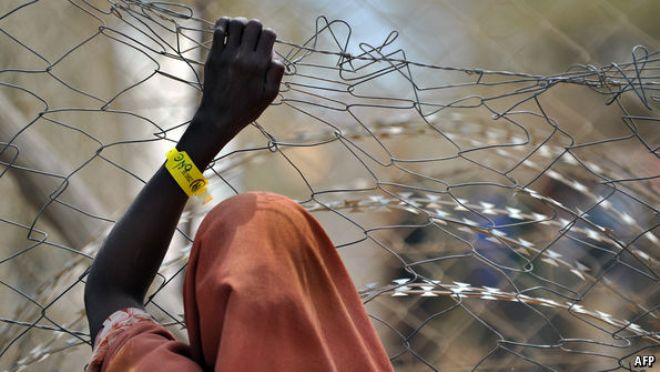
Friday, January 22, 2016
Cheek by jowl

City of Thorns: Nine Lives in the World’s Largest Refugee Camp.
advertisements
POLICEMEN clutching battered AK-47s stifle yawns in the hot sun outside the Westgate shopping mall in Nairobi. On the road leading up to the entrance cameras flash every few seconds, recording the number plate of each passing car. A city that once was fairly relaxed now feels as if it is under siege, its slumber ended by an attack on the mall in 2013 that left 67 people dead and as many as 175 wounded. The Shabaab, a Somali jihadist group, claimed responsibility.
Kenyan politicians quickly blamed Dadaab, the world’s biggest refugee camp, demanding that it should be closed. No connection was found between the attackers and the camp, yet the same demand is made every time Kenya suffers another outrage.
The sprawling camp was set up in 1992 to provide short-term shelter for refugees fleeing Somalia’s civil war and famine. It kept growing. Today Dadaab is home to about 500,000 people, dwarfing the main towns in the north-east of Kenya. \
Its economy, including its role as a way-station for a vast sugar-smuggling operation that is worth as much as $400m a year, powers that of the immediate region. Yet Dadaab is a refugee camp that has been largely forgotten by the world.
A generation of young people have been born and educated in it; now they scrabble to earn a living there. Many are starting families in its confines. Trapped in limbo, they wait for resettlement abroad, too afraid to return to Somalia. Their lives, chronicled in detail by Ben Rawlence in “City of Thorns”, are a constant struggle for dignity and agency in a place that seems determined to deny them both.
The stories he tells are gripping. A Somali mother takes her five children, a pot, a kettle, a cup and a plate and sets out to walk for more than two weeks to the camp across the Kenyan border. She chivvies the youngest by telling him that a lion is pacing right behind.
These tales do not come together in a neat ending, as they might in a novel. Instead the reader is left with a sense of loss and limbo—and the scent of dry wind, brush and sand. Lingering over it all is a strong feeling of lives being wasted by a world compassionate enough only to prevent people starving or being slaughtered in civil war, but not caring enough to resettle its many children and young adults—and make their lives worth living.